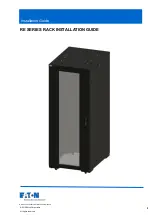
EN
16
RAID 0
•
When a hard drive fails in a RAID 0, the RAID fails completely.
• A
RAID 0 Spanning
offers the possibility to use hard drives with different charac
-
teristics. This is only a good solution if the saved data is actually redundant. As
an archive of “old hard drives” it is not a good solution. Old disks will eventually
fail and your archive will be lost.
RAID 1
•
A RAID 1 continues to work even if one hard drive fails. The failed disk should be
replaced as soon as possible as another disk failure would mean a complete loss
of all data.
We recommend to perform a data backup before installing the new
hard drive.
The exchange of a hard drive and the following rebuild of the data
use both drives heavily – there is a risk for the other hard drive to fail too.
• The installation of a new hard drive triggers the rebuild of the data. You can
simply put in the new hard drives while the other are busy but the smooth
operation of a RAID 1 can be interrupted by that. The rebuilding process takes
several hours – it is dependent on size and processing speed of the hard drives.
It
does not take place on the filesystem-layer
which means it cannot be seen on
the hard drives. Although the drive can be used during the rebuild this will delay
the process.
• The
rebuild
will not start when drive is actively accessed or the data cable is not
connected. If you notice this, just turn off the device, connect it to a PC and turn
it on again.
• A
started and active rebuild
will be carried out even with disconnected USB
cable.
• A
disk failure
is signalled by the flashing of the red LED (Nr. 12) on the failed
disk.
• A
rebuild
of the mirror is signalled by the light of the red LED (Nr. 12) on the
failed disk. At the same time both LEDs (Nr. 11) are changing colour between
blue an purple and both hard drives are working permanently.
•
Hard drives age and will eventually fail
. They can also
fail spontaneously due
to other defects
. When they are “identical” they will reach their
lifetime limit
around the same time.
According to this we recommend following strategy for exchanging hard drives:
Has one hard drive failed spontaneously, exchange this one hard drive. Has the
hard drive reached its lifetime limit (which differs from hard drive model to
model and depends on the intensity of usage), better exchange both hard drives
– after creating a backup. This allows for a RAID 1 system which works reliably
for a long time.
Hints for the Installation of Hard Drives with Data
Important: If you plan to remove hard drives from one system to install them into







































